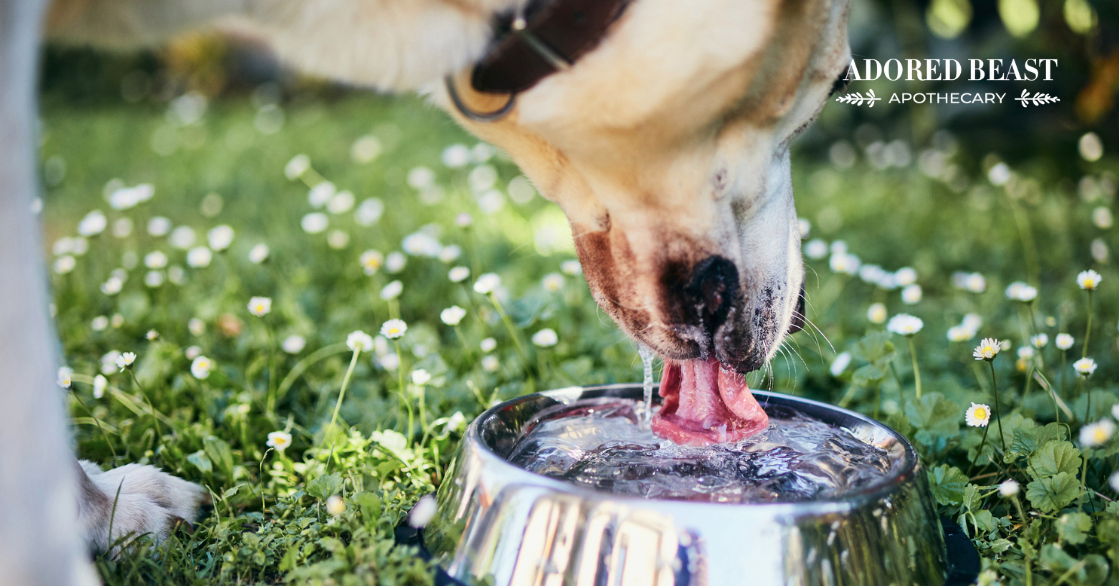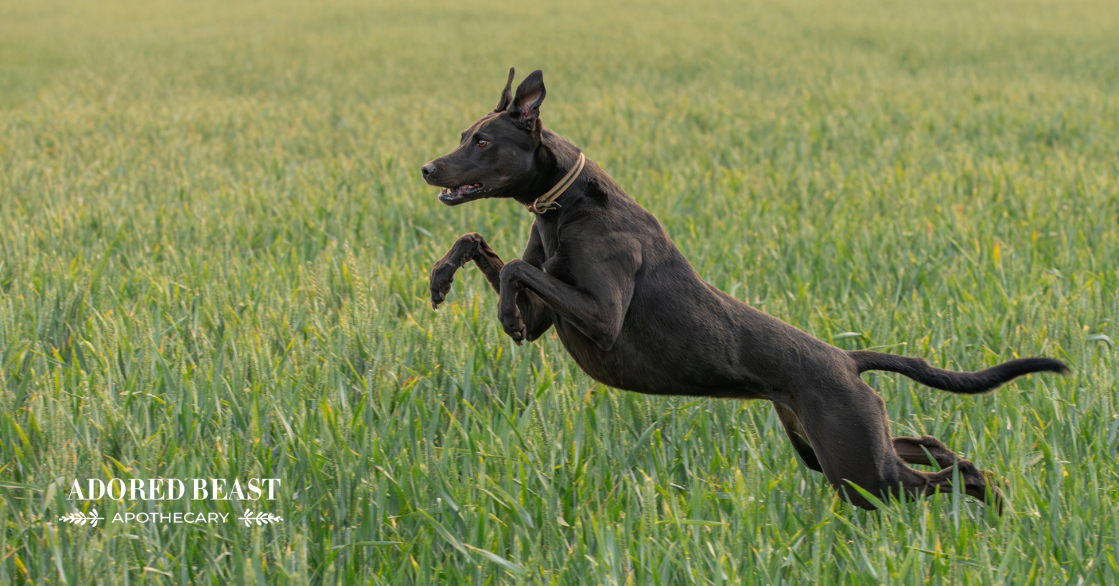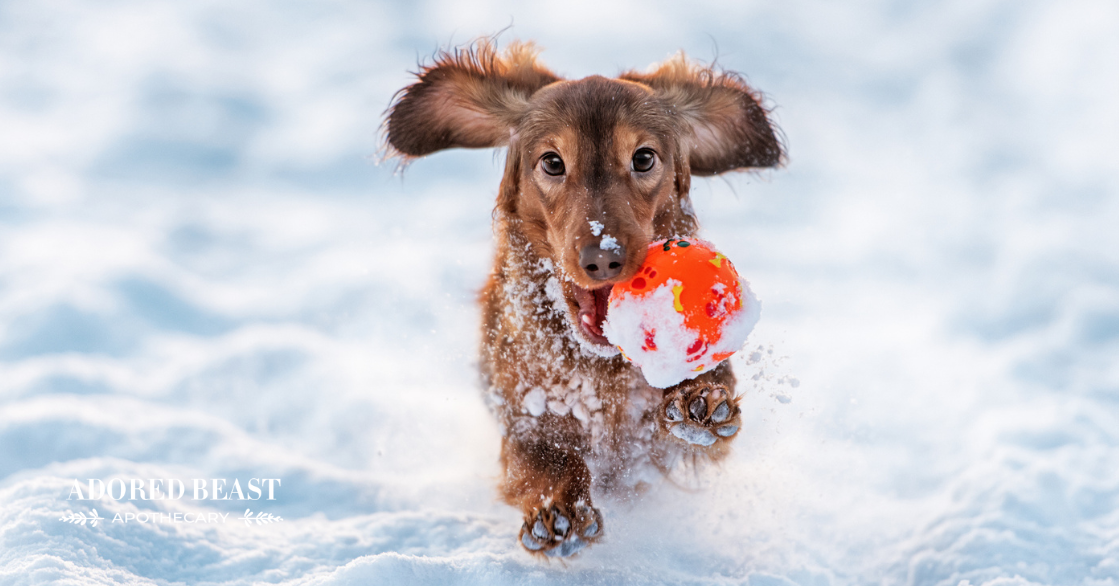There’s nothing quite like a large glass of water on a hot summer day. After a walk with the dogs, I can feel my body literally screaming at me for some water. Some days, if I’ve been lax with my water drinking, I can feel the dehydration in my arms and legs, see the crepiness in my skin, the draught happening in my body.
But what about our dogs – do they have these same feelings? And since they can’t communicate those feelings, how do we know when their bodies need a big water boost?
Dehydration in dogs can be serious – but sometimes it can be tough to spot it – especially when it’s just a mild case.
In this post, we’re walking you through the signs of dehydration, how to avoid it, how to deal with it, and when it’s time to seek veterinary help.
What is Dehydration in Dogs?
Just as with humans, dehydration in dogs occurs when the body is losing more water than it’s taking in. And while dogs don’t sweat the same way we do, they lose water all throughout the day through panting, breathing, urinating, defecating, and evaporation through their paws. This fluid is replaced when they drink and eat.
And that replenishment is important. We all (humans and animals) require water to function properly. Water helps cells absorb nutrition, lubricates the joints, supports the digestive process, regulates body temperature, balances the body’s pH, and helps the organs function. See? Very important!
Dehydration can have a few causes. Lack of water intake is one. This just means that your dog doesn’t have proper access to water or won’t drink enough. Acute attacks of vomiting and diarrhea, heatstroke, or illnesses and fever may also cause a dog to become dehydrated. Puppies, seniors, nursing mothers, and small breeds can be at higher risk of dehydration. Sometimes dehydration in dogs is a symptom of an underlying cause, including kidney disease, diabetes, or some types of cancer. And finally, some dogs just won’t drink much water unless they are encouraged to do so.
And when a dog has more water leaving the body than they can replace, and dehydration sets in, it can be a big deal. In fact, if left to progress, severe fluid shortage may lead to organ failure, which can be fatal.
Recognizing the Signs
Dehydration in dogs is something you need to address right away. That means being able to recognize the signs, as small as they may be.
Here’s what to watch out for:
- Pacing, listlessness
- Lethargy
- Excessive drooling
- Thicker-than-normal saliva
- Looking for water
- Pale, dry, or sticky gums
- Sunken, dry-looking eyes
- Dry nose
- Loss of appetite
- Vomiting
- Crying when they urinate
- Excessvie panting
A good starting point if you’re concerned about dehydration is scruff test. Gently take your dog’s scruff (the loose skin over their shoulders) and gently lift it away from their back. If your dog is well hydrated, the skin will bounce back right away. However, if it takes a while for it to settle back down, they could be dehydrated.
Another test is to check your dog’s gums to feel whether they’re sticky and dry. While you’re doing that, test for capillary refill time. Press your finger gently against your dog’s gums and then remove your finger. In a well-hydrated dog, the area where you pressed will appear white for a second, and then return to its normal pink colour almost immediately. In dehydrated dogs, the capillary refill time takes much longer.
If you’ve noticed the signs and think your dog may be dehydrated, first make sure they have access to plenty of fresh, cool water and encourage them to drink. And if you’re even just a little concerned, call your trusted veterinarian as this can be considered a medical emergency.
Preventing Dehydration in Dogs
Clearly dehydration is something we all want to avoid, and the best way to protect your dog is to make sure they don’t get in that condition in the first place.
And that means making sure that they always, always have access to fresh, clean water.
There are also several ways to help make sure your dog is drinking enough water throughout the day:
- Add water to food, especially if you feed kibble.
- Place additional water bowls outside and encourage water breaks during playtime (just don’t forget to wash them and refill them regularly).
- Bring water with you for your pet whenever you leave the house, and a collapsable bowl or container they can comfortably drink from.
- Look into a water fountain – many pets like the interaction of playing with the water, especially cats.
- If you have an elderly, injured, or arthritic animal, please make sure the water bowl is raised;
- Consider including some of these foods, in rotation (in dinner, as snacks, etc.), to your dog’s diet to increase overall water intake:
- coconut water
- bone broth (here’s an easy recipe to make your own – and remember, no onions!!)
- watermelon
- cucumber
- celery
- iceberg or romaine lettuce
- zucchini
- asparagus
- tomato
- bell pepper
- spinach
- cauliflower
**We like theses best in their raw form (except the bone broth of course).
As you can see, dehydration in dogs is a serious condition, one that you have to address as soon as you see any signs. When in doubt, call your vet to get their advice. Trust your instincts – you know your animal best, and they rely on you to keep them safe.












